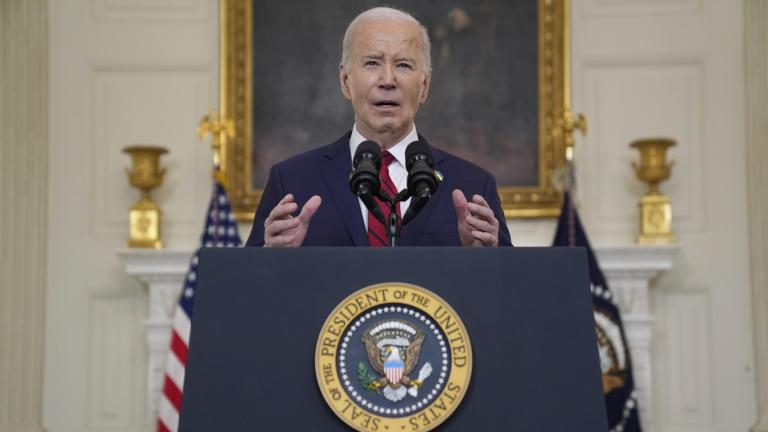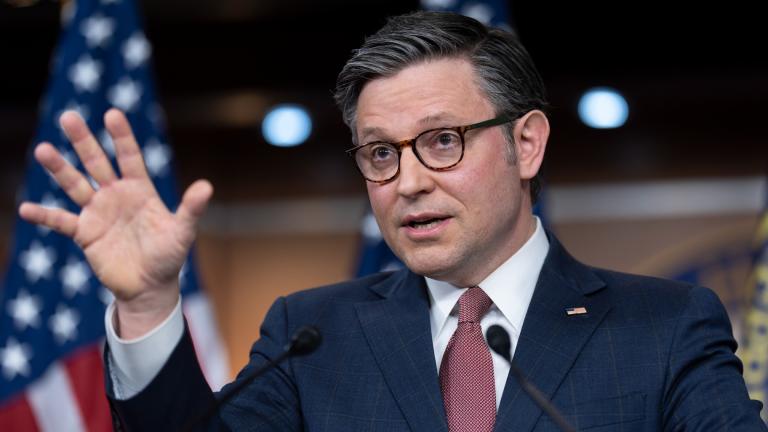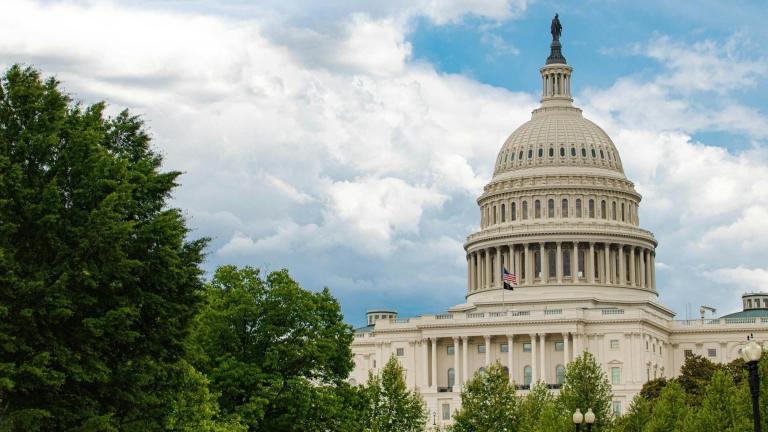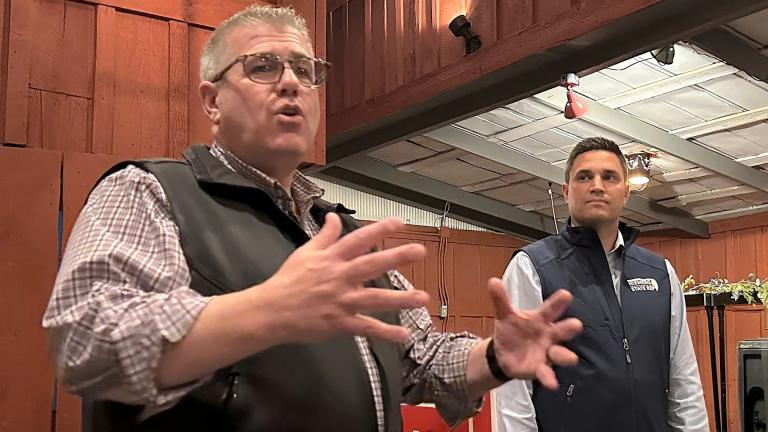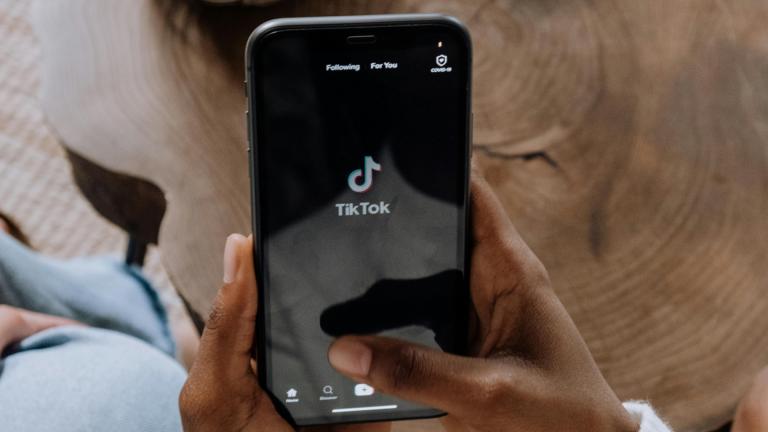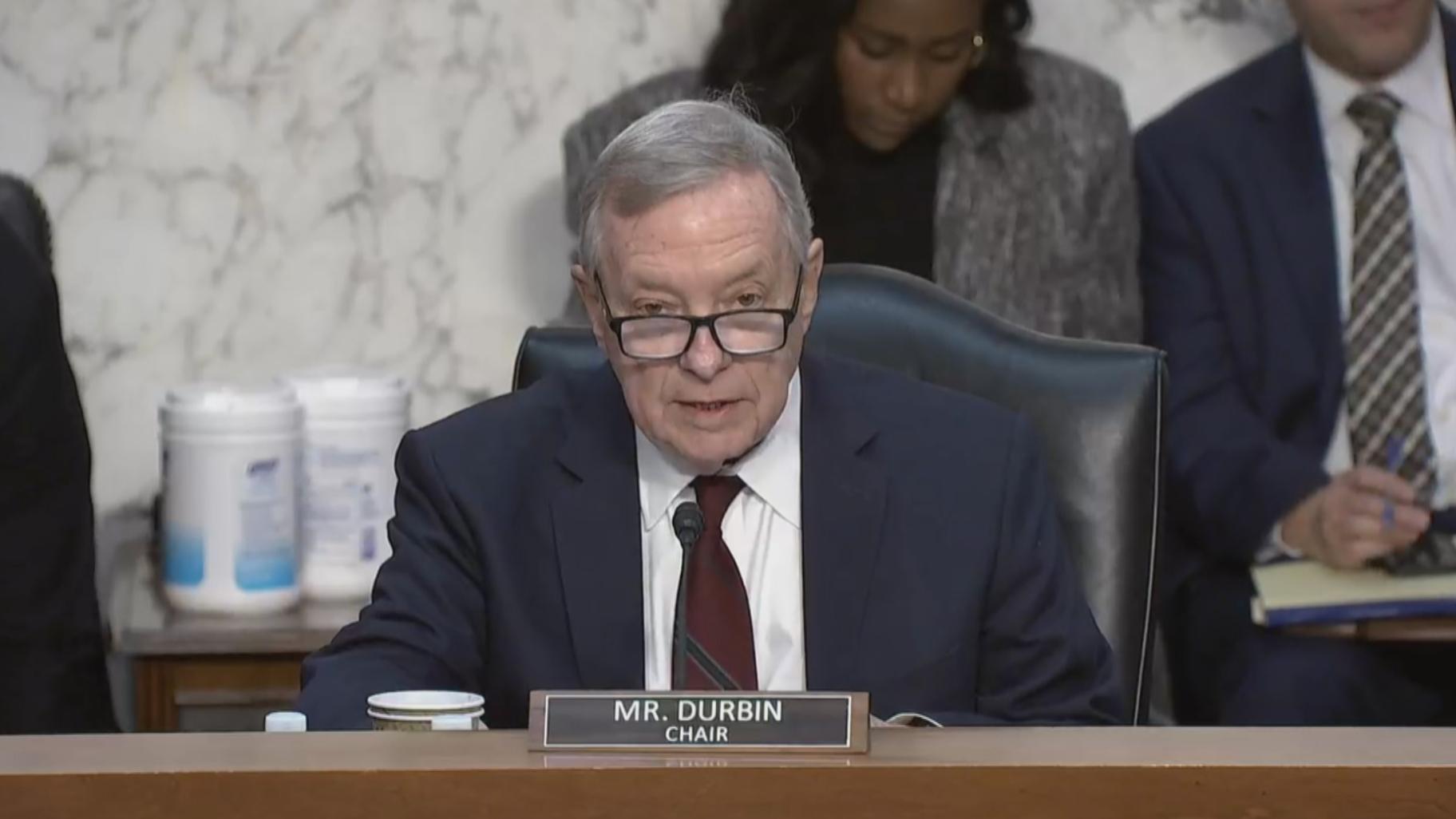 U.S. Sen. Dick Durbin from Illinois at a Senate Judiciary Committee hearing Nov. 28, 2023. (WTTW News)
U.S. Sen. Dick Durbin from Illinois at a Senate Judiciary Committee hearing Nov. 28, 2023. (WTTW News)
As America grapples with gun violence, members of the U.S. Senate Judiciary Committee grappled with whether that violence has become such a crisis that it should be a considered a public health emergency, with emergency room doctors and other health care professionals on the front lines.
“In cities like Chicago dealing with the constant drumbeat of gun violence, it has turned these public health officials into battlefield experts,” said U.S. Sen. Dick Durbin (D-Illinois), who chairs the committee. “They’ve seen the aftermath of bullets tearing through bone like it’s tissue paper.”
With “132 Americans every day dying from gun violence,” he said, “gun violence is a public health epidemic, plain and simple.”
To Republican U.S. Sen. John Cornyn of Texas, the designation is a stretch.
“We can find ways to come together to get things done, but using public health authorities as a blanket excuse to strip away constitutional rights while framing gun violence as an epidemic divides us more than it unites us,” Cornyn said.
Cornyn said uneven restrictions put in place in some states as precautions against COVID-19 — for example blocking religious services but allowing mass protests — are “examples of executive overreach that have relied on so-called public health emergencies” that bred distrust.
“We have a trust issue and a constitutional issue when we use the public health approach to attempt to strip away core constitutional rights,” Cornyn said. “The other problem with the public health approach is, the most efficient solution to firearm-related homicide and assaults is effective criminal law enforcement.”
Cornyn said gun violence could be curbed by empowering law enforcement to “investigative and prosecute repeat offenders.”
“You can dramatically rid the gun violence in a community where it’s a problem,” Cornyn said. “By removing the worst criminal elements from the community, everyone is safer.”
He said the perception that crimes won’t be prosecuted and that offenders can be released without bail contributes to the crime problem.
The Heritage Foundation’s Amy Swearer said using the public health lens does nothing to lead to a solution.
“If our policing, bail and prosecutorial policies spit these repeat violent offenders back into the community without pursuing criminal prosecution or punishment, they will predictively keep committing violent crimes,” Swearer said. “A public health lens doesn’t change the fact that most gun deaths are suicides, but half of suicides are carried out with something other than a firearm. The end goal of those publishing the public health framing is often either to use crisis language as an end-run around the constitution or to pathologize the right to keep and bear arms,” she said.
But tackling the issue directly from a public health, hospital-based intervention approach has worked at the University of Chicago Medicine Violence Recovery Program. Gun victims who participate and accept wraparound services have a reinjury rate of only 2%, while otherwise 45% of gunshot wound patients are shot a second time within the next five years.
Program director Franklin Cosey-Gay, testified that there are “proactive ways we can respond to get in front of the (gun violence) problem” including by incorporating a public health approach.
The Violence Recovery Program, he said, provides crisis intervention to gun victim when they’re in the hospital, and continues afterward by providing patients and their relatives with mental health, spiritual and other support services — in one case, finding emergency housing for the family of a 12-year-old patient who’d been shot in the thigh after the patient’s home was “rattled with gunshots” and “destroyed” in an act of retaliation.
The University of Chicago and nine other Chicago hospitals are establishing data sharing agreements, Cosey-Gay said, to better track outcomes of their work.
“It is clear that this is a persistent public health crisis,” Cosey-Gay said. “However, our response, to be proactive, needs to happen through a collaborative and coordinated approach.”
In 2021, Gov. J.B. Pritzker signed an executive order declaring gun violence a public health crisis. That created a state violence prevention office and invested $250 million over three years toward youth development, trauma-based services and other violence prevention approaches.
Durbin said the federal government needs to take action, with what he called “common sense” moves.
“Death by gunshot. And it’s going on in America every single damn day,” Durbin said. “And we have a responsibility to do something up here. Not just to say, ‘We need to fund the police more.’ I’ll sign up for that. Not just to say, ‘We need to deal with mental health counseling.’ I’ll sign up for that as well. But are we going to do some basic things like safety locks on guns so kids can’t play with them? Are we doing to do anything basic like identifying people who should not even be considered owners of guns and take advantage of the gun store loophole?”
Follow Amanda Vinicky on Twitter: @AmandaVinicky


